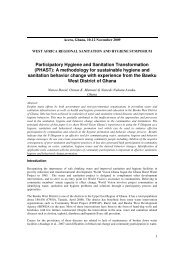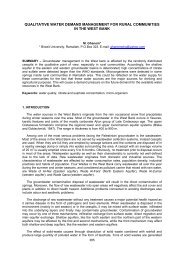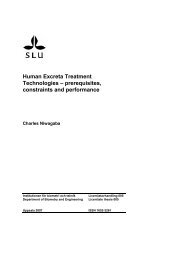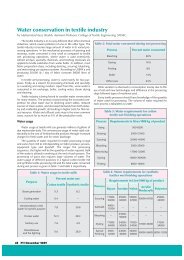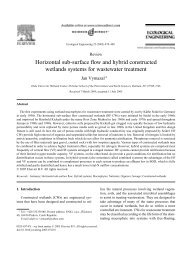The Incinerator Guidebook: A Practical Guide for Selecting ... - SSWM
The Incinerator Guidebook: A Practical Guide for Selecting ... - SSWM
The Incinerator Guidebook: A Practical Guide for Selecting ... - SSWM
You also want an ePaper? Increase the reach of your titles
YUMPU automatically turns print PDFs into web optimized ePapers that Google loves.
per<strong>for</strong>mance guidelines are needed to assist countries, donors, and programs to procure acceptable,<br />
improved treatment methods <strong>for</strong> infectious waste from immunization and other health programs.<br />
<strong>Practical</strong> challenges<br />
A four-country survey and assessment of small-scale incinerators <strong>for</strong> health care waste conducted<br />
by Stuart Batterman in 2004 confirmed widespread deficiencies in the design, construction,<br />
placement, operation, and management of the units. 2 Such deficiencies can result in poor<br />
per<strong>for</strong>mance of the incinerator (e.g., low temperatures, incomplete waste destruction, inappropriate<br />
ash disposal, high smoke emissions, or fugitive emissions). Still, user acceptance of small-scale<br />
incinerators appears generally high, and the use of incinerators is preferred over waste disposal in<br />
unsecured pits or landfills, or uncontrolled burning of waste in drums or pits. <strong>The</strong> following were<br />
recommendations from Batterman’s survey:<br />
Best practices <strong>for</strong> small-scale incineration 2<br />
� Effective waste reduction and waste segregation.<br />
� Installation of an engineered design, ensuring that combustion conditions are appropriate<br />
(residence time and temperatures that minimize incomplete combustion).<br />
� Construction adherence to detailed dimensional plans to avoid common flaws that cause<br />
incomplete destruction of waste, higher emissions, and premature failures of the<br />
incinerator.<br />
� Training of incinerator operators on appropriate start-up and cool-down procedures,<br />
maintenance of optimal operating temperatures, visible emission monitoring, appropriate<br />
loading/charging rates, proper ash disposal, recordkeeping to track quantities of waste<br />
destroyed and auxiliary fuel used, and occupational safety.<br />
� Periodic maintenance to replace or repair defective components (e.g., inspection and<br />
spare parts inventory).<br />
� Placement of incinerators away from populated areas or where food is grown.<br />
� Enhanced training and management (possibly promoted by certification and inspection<br />
programs <strong>for</strong> operators); the availability of an operating and maintenance manual,<br />
management oversight, and maintenance programs.<br />
3




